Black pacu - Colossoma macropomum
Scientific name: Colossoma macropomum
Common name: Black pacu
Family: Serrasalmidae
Usual size in fish tanks: 90 - 100 cm (35.43 - 39.37 inch)
014
Recommended pH range: 6.5 - 7
Recommended water hardness: 4 - 18°N (71.43 - 321.43ppm)
0°C 32°F30°C 86°F
Recommended temperature range: 23 - 28 °C (73.4 - 82.4°F)
The way how these fish reproduce: Spawning
Where the species comes from: South America
Temperament to its own species: peaceful
Temperament toward other fish species: peaceful
Usual place in the tank: Middle levels
Short description
The Black Pacu (Colossoma macropomum) is the largest member of the family Serrasalmidae, related to piranhas but with an omnivorous diet that leans heavily toward plant matter. It is a peaceful giant, but with an adult size of 90–100 cm (35–40 in) and a weight exceeding 25–30 kg (65 lbs), it is not suitable for home aquaria. Juveniles are often sold in the aquarium trade, but they quickly outgrow even very large private tanks. In the wild they are important seed dispersers in flooded Amazonian forests, and in aquaculture they are raised as a food fish.
Origin
Native to South America, the Black Pacu is found throughout the Amazon and Orinoco river basins. It inhabits floodplains, lagoons, and slow-moving river channels, particularly in seasonally flooded forests where it feeds on fruits and nuts falling from trees.
Food and feeding
The Black Pacu is omnivorous with a strong herbivorous tendency. In the wild it consumes fruits, nuts, seeds, aquatic vegetation, and detritus, but will also take insects or small fish opportunistically. In captivity, provide a diet of vegetable-based pellets, fresh vegetables (lettuce, spinach, peas, zucchini), and occasional treats of nuts or fruit. Protein sources such as shrimp, worms, or fish fillets can be given occasionally, but plant matter should dominate.
Sexing
Males have more pointed dorsal and anal fins compared to females. Otherwise, external differences are minimal.
Breeding
Spawning in home aquaria is virtually impossible due to the enormous size and space requirements. In aquaculture, spawning is induced through hormonal treatments in large outdoor ponds. In the wild, breeding occurs in seasonally flooded areas where fish migrate into inundated forests to spawn.
Lifespan
In the wild, Black Pacu can live for 20 years. In captivity, with proper care and sufficient space, they may also reach or exceed two decades.
Behavior and compatibility
Despite their size, Black Pacu are peaceful community fish. They rarely show aggression toward tank mates, but their sheer size makes them a threat to smaller fish, which may be accidentally consumed. They are schooling fish when young, but adults often live singly or in loose groups. Pacu require massive aquaria or ponds to thrive; small tanks will quickly lead to stunted growth and poor health.
Tank requirements
- Tank size: Beyond the capacity of standard home aquaria; only public aquariums or very large custom ponds (thousands of liters) are appropriate.
- Décor: Open swimming areas with robust filtration. Driftwood and hardy plants may be added, but pacu may nibble on them.
- Filtration: Oversized and powerful; pacu produce large amounts of waste and require strong biological and mechanical filtration.
- Lighting: Moderate; provide shaded areas for security.
Notes
The Black Pacu is frequently sold as a juvenile “tank fish,” misleading beginners. In reality, it is a giant food fish raised in aquaculture and not appropriate for private aquariums. Those interested in keeping pacu should either maintain large ponds or consider smaller, related species more suitable for aquaria.
The Black Pacu (Colossoma macropomum) is a peaceful species, but it reaches over 90 cm (3 feet) and can weigh more than 25–30 kg (65 lbs). Because of its enormous adult size, this fish is not suitable for home aquaria. It should only be kept in very large public aquariums or outdoor ponds. Juveniles are often sold in the trade, but they will quickly outgrow even the largest private tanks.
Pictures
Bought by aqua-fish.net from jjphoto.dk.
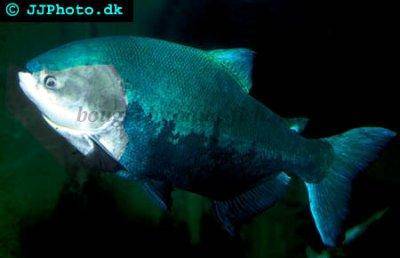


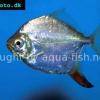 Redhook
Redhook 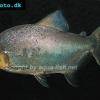 Red
Red 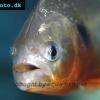 Orinoco
Orinoco 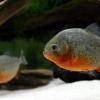 Red
Red 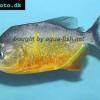 San
San 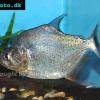 Pinche
Pinche